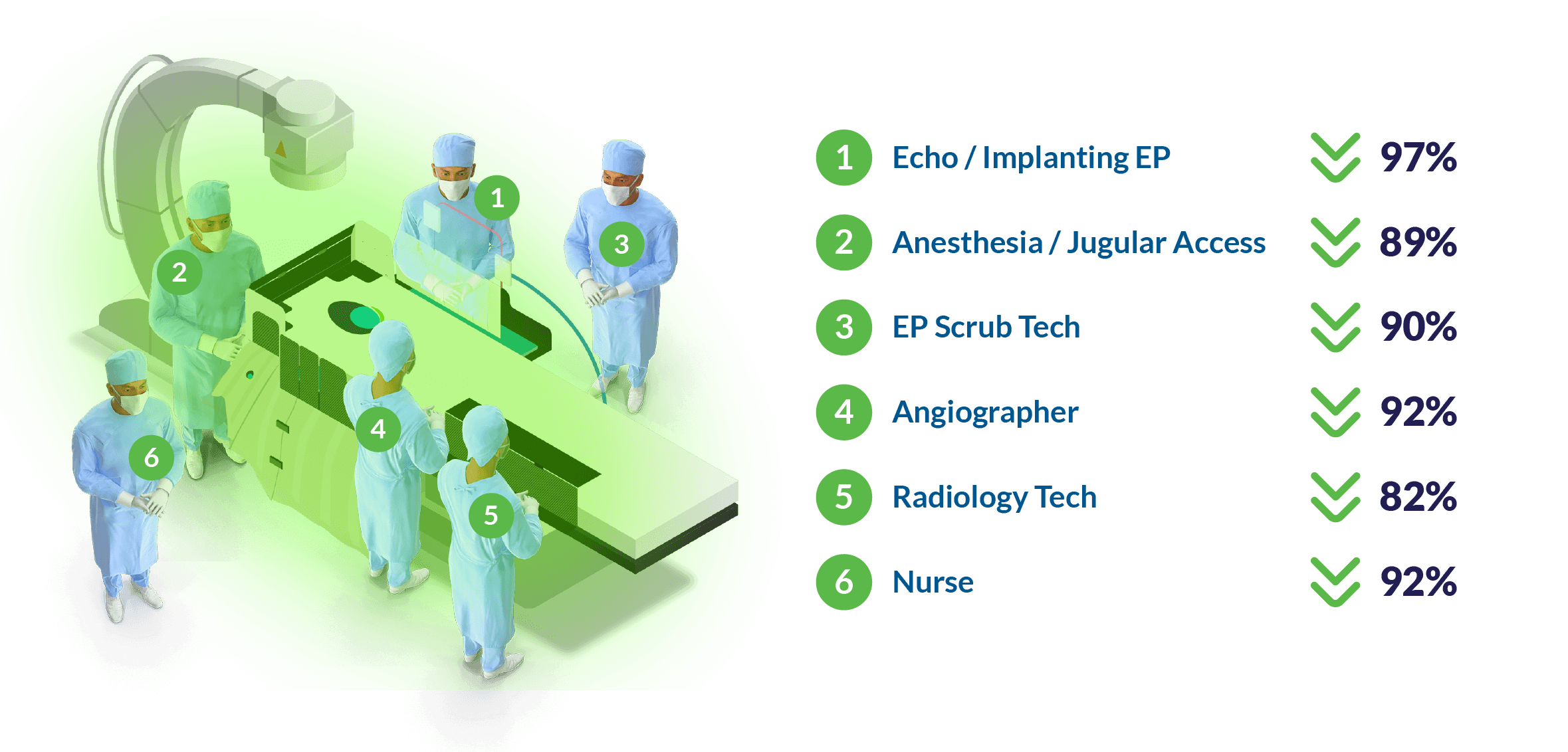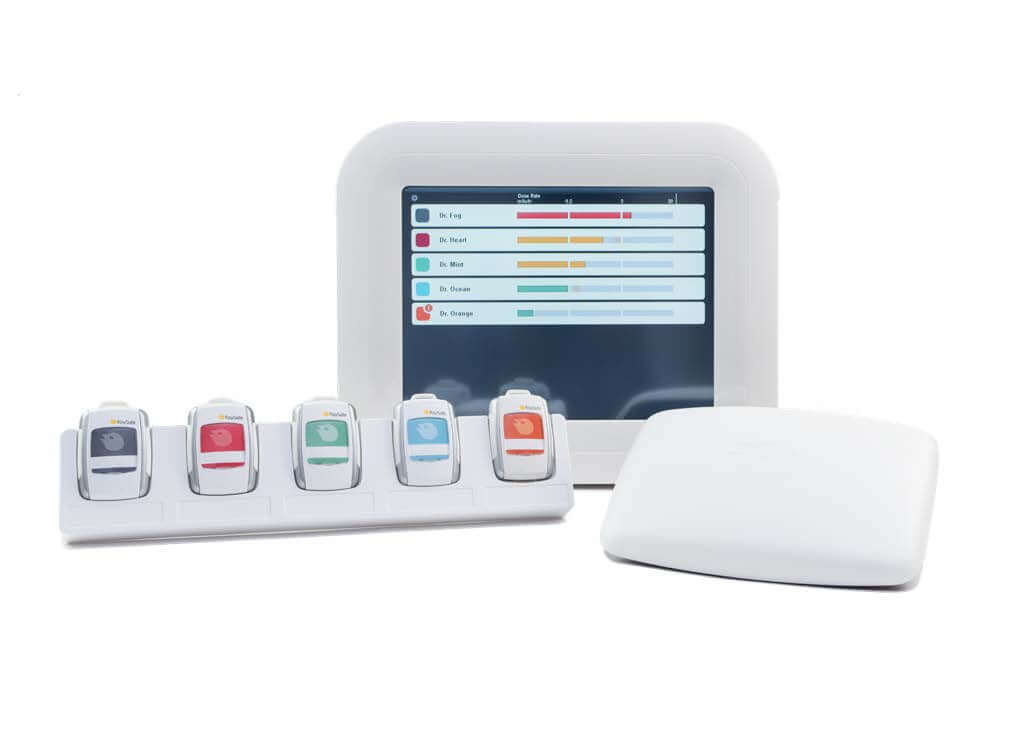
Case Study RaySafe i3
Results
• Real-time radiation exposure monitoring for
peace of mind
• Verify the effectiveness of radiation shielding
• Minimize radiation exposure to staff without the
need for heavy lead aprons
Application
Occupational real-time dosimetry during interventional cardiology and vascular surgery.
Customer
Dr. Bob Wilson, founder and CEO of Egg Medical, has been an Interventional Cardiologist and cath lab director at the University of Minnesota since 1986. Dr. Wilson is passionate about improving radiation safety for hospital staff. He has witnessed the long-term impact of radiation exposure, including diseases such as cataracts, cancer, and orthopedic issues caused by wearing heavy lead aprons – all of this happening even to his younger colleagues.
This motivated him to design a shielding system that allows staff to work without lead aprons, while still providing effective protection to everyone in the cath lab – without interfering with their workflow. The shielding system is used with RaySafe i3 to verify its effectiveness.
Challenge
Interventional X-ray procedures offer benefits like smaller incisions, reduced infection risk, and faster recovery. However, staff are often exposed to scattered radiation, especially with larger patients.¹
Standard protection devices (shields, barriers, lead aprons) help but aren’t fully sufficient, says Dr. Wilson.
“
To be able to take the lead off, you need to wear a real-time dosimeter!
We recommend using the RaySafe i3 to see your dose in real time and make adjustments on the fly.”
– Dr. Bob Wilson

Dr. Bob Wilson, Interventional Cardiologist. Founder and Chief Executive Officer, Egg Medical.
Only about 1% to 5%² of the radiation reaching the patient passes through to the detector; the rest is absorbed or reflected by the patient.
To better understand radiation distribution in the cath lab, Egg Medical conducted extensive measurements using the RaySafe X2. They found the highest doses near the patient’s head, chest, and under the table. Additionally, 18%³ of scattered radiation comes from X-ray tube leakage. Following ALARA guidelines, minimizing unnecessary radiation is essential for staff safety.
Solution
Based on their findings, Egg Medical developed the EggNest™ shielding system to enable staff to work without lead aprons. Dr. Wilson says it has significantly reduced radiation exposure for the entire interventional team (see image below).
For real-time safety assurance, the shielding system is paired with a RaySafe i3 dosimeter. Dr. Wilson emphasizes, “To take the lead off, you need real-time monitoring. Mistakes happen, and it’s important to be able to adjust on the fly.”
The RaySafe i3 real-time dosimetry system can also be used stand-alone for instant feedback on radiation exposure. This helps medical staff take immediate radiation reduction measures and use protective gear more effectively.

As a basis for product development, the Egg Medical team wanted to understand scatter radiation distribution in the cath lab, so they performed measurements using the RaySafe X2 with a survey sensor. Before the dose exposure study, they validated the RaySafe X2 by comparing ion chamber and solid-state technologies, which showed highly correlated values. They concluded: “RaySafe X2 offers highly accurate dose readings with excellent repeatability.”

This image shows typical radiation reduction values comparing EggMedical shielding to standard shielding⁴. During test installations in hospitals, each staff member is equipped with a RaySafe i3 dosimeter to monitor their dose in real time. These measurements can be compared with previous values for similar procedures.
“
RaySafe X2 solid state meters provide excellent accuracy and repeatability.⁵”
– Dr. Bob Wilson
The RaySafe i3 is an active dosimetry system that provides immediate insights into radiation exposure, helping medical staff and physicians use radiation reduction measures more effectively. Instant feedback empowers users to learn, adapt, and take immediate actions to minimize unnecessary radiation exposure.
1) AHA Journals, “Patient Body Mass Index and Phycisian Radiation Dose During Coronary Angiography”
2) Mowery ML, Singh V. “X-ray Production Technical Evaluation”, StatPearls.
3) Measured by Egg Medical. Cardiovascular Research Technologies (CRT) 2020, and Health Physics Society (HPS) 2023.
4) Presented by Egg Medical at the Transcatheter Cardiovascular Therapeutics (TCT) Conference in 2018.
5) RaySafe X2 Specification Brochure: The stated uncertainty includes both accuracy and repeatability across various measurement conditions.

